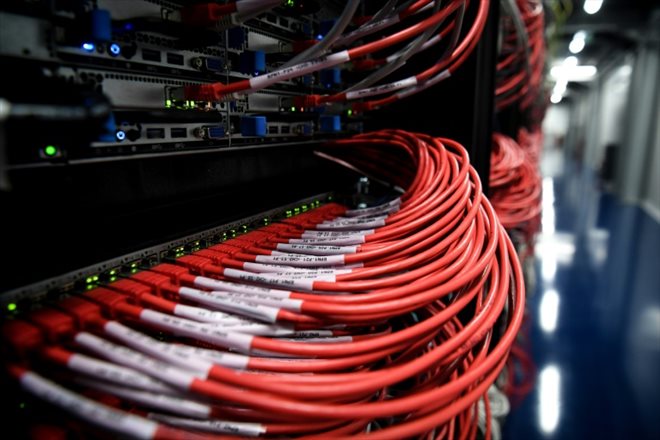Servers in Suwon, South Korea. By 2025, the tech sector should consume 20% of the electricity produced globally and represent 5.5% of total carbon emissions (AFP/Archives/Jung Yeon-je)
They are at the heart of our digital lives, but represent an environmental challenge: as data centers multiply, the carbon footprint of the tech sector worries, but the answer could come from artificial intelligence (AI), assure its promoters.
The stakes are high because by 2025, the sector should consume 20% of the electricity produced worldwide and represent 5.5% of total carbon emissions.
And the proliferation of ever more energy-intensive uses and applications risks accelerating the pace even further.
“Pandora’s box is open,” concedes Arun Iyengar, boss of Untether AI, a company that seeks to manufacture less energy-consuming semiconductors for AI. “We can use AI to improve uses to make them compatible with climate requirements, or do nothing and suffer the consequences,” he explains.
But the adaptation of servers must be done now, when they are being modified to become compatible with the needs of AI, “a major breakthrough for computing”, according to a Google official.
– Race for energy efficiency –
The development of generative AI tools, such as the GPT-4 chatbot, the basis of the success of ChatGPT, or Google’s Palm2, for Bard, is done in two stages, both energy-intensive: “training” and commissioning.
Researchers at the University of Massachusetts who trained these tools discovered in 2019 that driving just one of these models emitted as much as five cars over their entire life cycle.
More recently, a joint study by Google and the University of Berkeley estimated that the GPT-3 generative robot drive resulted in the emission of 552 tons of carbon, as much as a car traveling two million miles.
Its successor, GPT-4 has been trained with 570 times more parameters and the number of these will only grow as AI becomes more powerful and pervasive.
At the base of this development are the graphics processors, or GPUs, manufactured by Nvidia, which are particularly energy-intensive.
Once the training has passed, the commissioning of generative AI tools via the cloud also requires energy through consumption linked to the requests received. And the latter greatly exceeds that of the training phase.
However, for cloud servers, since powerful processors are no longer necessary, companies could opt for more virtuous solutions.
Amazon Web Service (AWS), Microsoft or Google, the main cloud players, claim to seek to reduce their energy consumption. AWS has even announced that it is aiming for carbon neutrality by 2040, Microsoft wanting to be “a negative emissions and waste-free company” by 2030.
And the first elements seem to show that these groups want to achieve this: between 2010 and 2018 the consumption of data centers in the world increased by 6%, despite a rise in their use of 550%, according to data from the International Agency energy (IEA).
– Global warming –

Servers at the Scaleway data center, a subsidiary of the French group Free in Saint-Ouen-l’Aumone in Val-d’Oise on July 9, 2021 (AFP/Archives/ALAIN JOCARD)
For new AI moguls, the carbon footprint of their creation is irrelevant and masks its revolutionary potential.
“Once we have a really powerful super-intelligence, solving global warming will not be very difficult”, assures the founder of OpenAI (ChatGPT), Sam Altman.
“It shows how far you allow yourself to dream. Imagine a system you can ask + tell me how to produce a lot of clean, cheap energy, how to effectively capture carbon, and how to build a factory that can do it at home. ‘global scale+”, he continues.
Nvidia boss Jensen Huang believes that the massive deployment of AI and faster calculations could ultimately reduce cloud demand, and therefore consumption in the sector.
Thanks to AI, laptops, smartphones or cars could become energy-efficient supercomputers that do not need to retrieve data from the cloud.
“In the future, you will have a tiny processor in your phone and 90% of the pixels will be generated, the remaining 10% will be fetched online, instead of 100% now, so you will consume less,” he said. to journalists.
But some experts believe instead that the frantic race for AI diverts attention from environmental risks.
“Major companies are currently spending a lot to deploy AI. I don’t think they are worried about the environmental impact yet, but I think it will come,” hopes Arun Iyengar.
© 2023 AFP
Did you like this article ? Share it with your friends with the buttons below.




